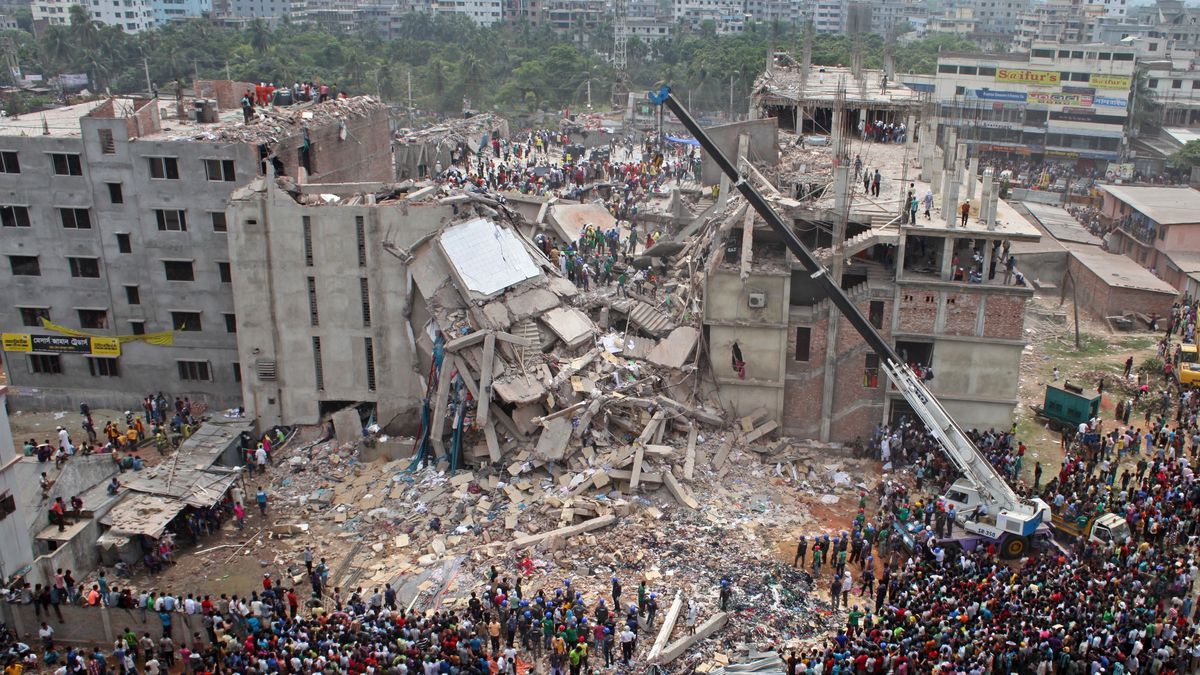It has been a decade since the devastating Rana Plaza factory collapse occurred in Bangladesh, causing injury to more than 2,500 workers and claiming the lives of over 1,100 people. The incident still stands as the worst disaster in the modern history of the fashion industry. The building housed numerous garment manufacturing units of some of the world’s largest fashion brands, as many of them sourced products from Bangladesh due to the country’s low labor and production costs.
Originally intended for commercial use, the building was later converted into industrial space without proper checks and audits. When cracks appeared in the structure, warnings were ignored by authorities, and workers were forced to continue working without union representation or a platform to voice their concerns. While the vibrations from the power generator were initially believed to have triggered the collapse, subsequent investigations revealed that various other factors, including oversight by authorities, substandard materials used in construction, unauthorized construction of floors beyond permitted design, and a lack of strict labor laws all contributed to the disaster. Similar incidents have also occurred in India and Pakistan.
The Rana Plaza disaster drew attention to the consequences of the high demand for fast fashion, which came at the expense of workers’ safety and well-being. Workers were forced to work long hours in overcrowded conditions for minimal wages to meet high production targets.
The fashion industry underwent a transformation following the incident. The event prompted a global call for change, with many organizations demanding that fashion brand owners take responsibility and accountability for the safety of workers. It also raised awareness about the consequences of cheap and trendy fashion apparel, leading customers to become more conscious of sustainability.
The Bangladesh authorities took swift action, and in 2013, the Accord on Fire and Building Safety in Bangladesh was established. Over 200 brands committed to improving working conditions, and an independent inspection program was introduced to ensure safety and recommend improvements to factory owners. In 2021, a new international accord was introduced, extending work to other countries, but more brands need to join for it to become a global success.
Despite paving the way for a more ethical and sustainable industry, there is still much work to be done. There remains an imbalance of power, and major fashion brands have significant bargaining power. As more and more brands continue to base their supply chains in developing countries to cut costs, systematic change is required. Many consumers now seek transparency, leading to certifications like fair trade-certified apparel that guarantees living wages for workers and a non-hazardous work environment. The government must enforce strict labor laws to protect workers’ interests and ensure that no human rights abuses occur. Brands, retailers, designers, and all other stakeholders must take responsibility and accountability for their chains and work together to address the multi-fold issues that still exist within the industry. Only then can we create an industry that is ethical, sustainable, and just for all.
References:
- “Bangladesh factory collapse toll passes 1,000.” BBC News. https://www.bbc.com/news/world-asia-22476774
- “Rana Plaza disaster: Bangladesh factory safety deal four years on.” BBC News. https://www.bbc.com/news/business-39665954
- “Rana Plaza building collapse.” Clean Clothes Campaign. https://cleanclothes.org/safety/rana-plaza-building-collapse
- “Rana Plaza: the disaster that sparked the rise of ethical fashion.” The Guardian. https://www.theguardian.com/sustainable-business/2018/apr/24/rana-plaza-disaster-sparked-the-rise-of-ethical-fashion
- “Accord on Fire and Building Safety in Bangladesh.” International Labour Organization. https://www.ilo.org/dhaka/Whatwedo/Projects/WCMS_447074/lang–en/index.htm
- “How the Rana Plaza disaster changed the fashion industry.” Vogue Business. https://www.voguebusiness.com/sustainability/how-the-rana-plaza-disaster-changed-the-fashion-industry
- “The Fashion Industry’s Dark Side.” Forbes. https://www.forbes.com/sites/nikkibaird/2018/10/04/the-fashion-industrys-dark-side/?sh=32c7dafe3641
- “The Rana Plaza Collapse: A Wake-Up Call for Fast Fashion Brands.” The Balance Small Business. https://www.thebalancesmb.com/the-rana-plaza-collapse-a-wake-up-call-for-fast-fashion-brands-4164752










